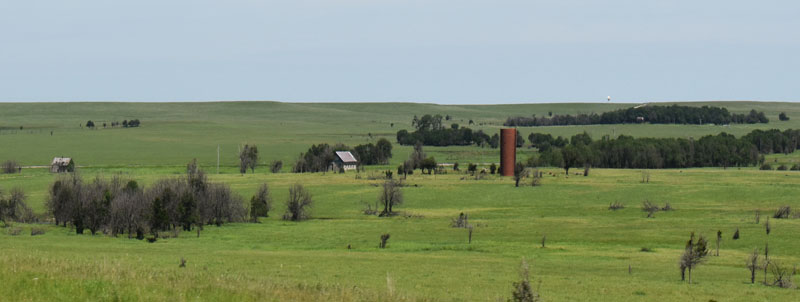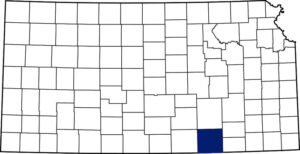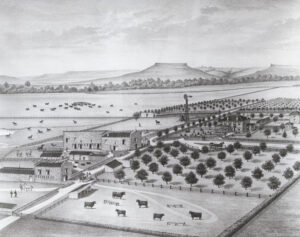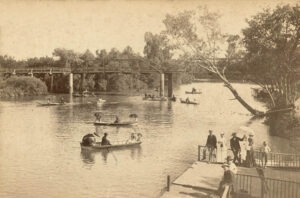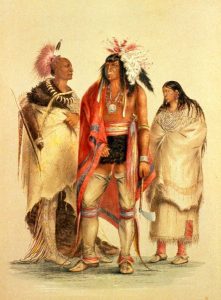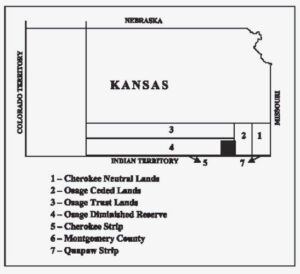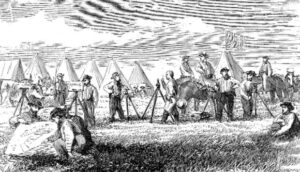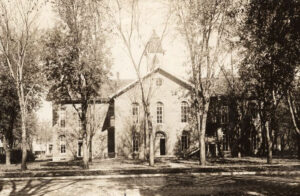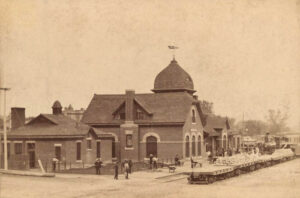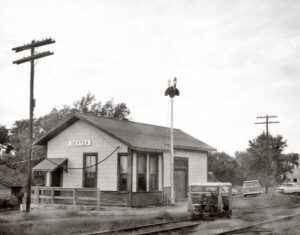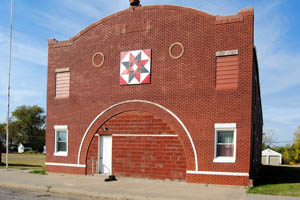Towns & Places:
Arkansas City
Atlanta
Burden
Cambridge
Dexter
Parkerfield
Rock
Udall
Winfield – County Seat
Cowley State Fishing Lake & Waterfall
Winfield Lake
Arkansas River
Arkansas River Lowlands
Walnut River
Whitewater River
Cowley County Photo Gallery
One-Room, Country, & Historic Schools of Cowley County
Cowley County, Kansas, is located in the southern tier of the state. The county seat is Winfield, and its most populous city is Arkansas City. As of the 2020 census, the county population was 34,549.
The fifth county west of Missouri, it was created in March 1867. Reserved for the Osage Indians, it was initially named Hunter County for Robert Mercer Hunter, a Virginia Representative and Senator to Congress and Speaker of the House. In 1870, the county was renamed in honor of Lieutenant Mathew Cowley of Company I, Ninth Kansas, who was killed at Little Rock, Arkansas, during the Civil War in 1864.
The county is bounded on the north by Butler County, on the east by Elk and Chautauqua, on the south by the State of Oklahoma, and on the west by Sumner County.
In its early history, the county’s general surface was a gently rolling prairie. There were some bluffs in the east, and the western part was quite level. The Arkansas River Valley averaged about five miles in width; the Walnut River Valley averaged about two miles, and the smaller streams ranged from a quarter of a mile to a mile. Timber belts were found along the streams ranging from a quarter of a mile to a mile in width and contained cottonwood, elm, hackberry, mulberry, walnut, oak, redbud, pecan, hickory, ash, and cedar. The county was well-watered by the Arkansas River, which crossed the southwestern portion, and the Walnut River, which flowed south through the western part of the county. The most important tributaries of these rivers were the Muddy, Dutch, Timber, Silver, and Grouse Creeks.
Excellent-quality magnesium limestone was found and extensively quarried for local use and shipment out of the county. Gypsum was found in large quantities in the West. A large salt marsh existed in the southwestern portion.
It is believed that N. J. Thompson was the first settler in Cowley County. He built a cabin on the Walnut River, near what he thought was the southern line of Butler County, in August 1868, but it was later found that he was actually in Cowley County. The land was still an Indian reservation, but the fertile soil attracted white settlers, and another settlement was soon established south of Thompson by William Quimby and a man named Sales.
Cattle dealers began to come among the Osage Indians to purchase their herds and carried back reports of the rich lands, which caused several white settlers to trespass on the Indian reserve and make settlements. Among those who came in 1869 were James Renfro, T.B. Ross, John and Joseph Stanbury, F.W. Schwantes, S B. Williams, B.F. Murphy, T. A. Blanchard, and others, who extended the settlements southward to within four miles of the present city of Winfield. In June 1869, C. M. Wood brought a small stock of groceries from Chase County to sell to the Indians. He kept his stock at James Renfro’s house for a time but soon erected a stockade and cabin on the west bank of the Walnut River, nearly opposite where Winfield now stands. The Indians were numerous and, knowing the insecurity of the whites in the country, began to steal and make unfriendly demonstrations, which caused Wood to move back to Renfro’s for safety.
About the same time that Wood came, E.C. Manning and P. Y. Becker came down the valley and erected a cabin for the latter at the bend of the Walnut River about two miles below Winfield. On June 11, Manning claimed the land where a part of Winfield now stands. In August, all the settlers in the valley were ordered off the Indian lands. Wood’s stockade was burned, and all the settlers but T. B. Ross left for Butler County. Later, the settlers began to drift back, and in September, several families came down the valley to settle near Manning. These settlers each paid the Osage chief $5 for the privilege of remaining. Among them were W. G. Graham and his family, Mrs. Graham, the first white woman of North Timber Creek.
Prettyman Knowles, James H. Land, and J. C. Mountfort also settled in this neighborhood. Alonzo Howland, W. W. Andrews, Joel Mack, H. C. Loomis, A. Mentor, and others took up claims in December. Mr. Howland built a dwelling on his land just south of where Winfield now stands, which was the first frame house in the county, the lumber for it having been hauled 100 miles.
During the summer of 1869, H. C. Endicott, Edward Chapin, George Harmon, W. Johnson, Patrick Sommers, and others took up claims as far south as the site of Arkansas City.
Early in February 1870, the legislature introduced a bill to organize Cowley County. This bill named Cresswell (now Arkansas City) as the county seat. However, the citizens of Winfield determined to have their town made the county seat. C.M. Wood, A.A. Jackson, and J. H. Land canvassed the county and found that it contained over 600 inhabitants needed for the organization. Papers were made out and forwarded to the governor, petitioning him to have Winfield made the seat of justice.
The Methodists were the pioneer religious organization in the county. They perfected a church organization at Winfield in the spring of 1870 under the direction of B. C. Swartz, and in the fall, the Baptists organized a church at Winfield. Other denominations soon followed these.
In June 1870, a party of men took claims along the Grouse Valley: John Nichols, O. J. Phenis, D. T. Walters, Gilbert Branson, and William Coats. Up to this time, all settlers had been trespassing on the Indian lands, but on July 15, 1870, the Osage Diminished Reserve was opened for settlement, and the whites began to pour into the county.
The land was surveyed and sold to actual settlers in quantities of not more than 160 acres each. Among the new arrivals were J. C. Fuller and D. A. Mulligan, who bought A. A. Jackson’s claim, which adjoined Manning’s. Max Shoeb built a log blacksmith shop, and W. Z. Mansfield opened a drug store in a log cabin, the first of its kind in Winfield.
When Cowley County officially opened for settlement, a lengthy and bitter disagreement arose between the towns of Winfield and Cresswell (now Arkansas City) over the county seat. Finally settled after two special elections and numerous petitions to the Governor and Legislature, Winfield was determined to be the county seat.
On February 28, 1870, the governor proclaimed the county organized, with Winfield as the temporary county seat. A special election for township officers to locate the county seat was ordered for May 2. At that election, Winfield received 108 votes and Creswell 55, with Winfield becoming the permanent seat of justice.
The county’s first newspaper was the Cowley County Censor, owned and edited by A.J. Patrick. The first issue was dated August 31, 1870. The first postmaster in the county was C. H. Norton of Arkansas City was appointed on April 18, 1870. The next was E. C. Manning at Winfield, appointed in May. The first United States census was taken in June 1870, and the population was 726.
The first district court session was held at Winfield on May 23, 1871, by Henry G. Webb, judge of the Eleventh judicial district. Arkansas City and Winfield were hardly established as towns before schools were opened. In 1871, a $10,000 schoolhouse was built at the latter place, and 37 districts were organized the same year, although only three were erected buildings.
On August 22, 1871, a petition was circulated to change the county seat to Tisdale, located at the exact geographical center of the county. The vote resulted in a victory for Winfield. In 1873, county buildings, including a courthouse and jail, were built. The former, which cost $11,500, was located on a block of land; one-half of it was donated to the county by the town company, and the commissioners purchased the other half.
Cowley County was one of the state’s first counties to produce corn. Oats, winter wheat, and other grains were also extensively raised. Livestock raising was one of the leading industries, and dairying was a paying business. The county had about 300,000 bearing fruit trees, bringing in a significant income.
In 1910, few counties in the state had better transportation facilities. Five lines of the Atchison, Topeka & Santa Fe Railroad system centered at Winfield; the Missouri Pacific Railroad entered the county near the southeast corner and ran west to Winfield; a branch of the same system ran from Dexter to Arkansas City; the St. Louis-San Francisco Railway crossed the county diagonally from northeast to southwest, through Winfield, and a line of the Kansas Southwestern ran west from Arkansas City. Altogether, the county had over 200 miles of mainline railroad track.
At that time, its population was 31,790. The value of farm products, including animals slaughtered or sold for slaughter, was $4,321,090. The five leading crops were: corn, $674,865; hay, $581,383; oats, $398,559; Kafir corn, $172,500; sorghum, $101,760. Dairy products valued at $429,123 were sold during the year.
The county’s population peaked in 1930 at 40,903.
In 2010, the Keystone-Cushing Pipeline (Phase II) was constructed north to south through Cowley County. Controversy arose from the Kansas legislature’s decision to grant the pipeline a ten-year exemption from property taxes. It was estimated that this would mean $15 million per year in lost revenue to the six counties through which the pipeline passed. The counties were unsuccessful in an attempt to eliminate the exemption.
According to the U.S. Census Bureau, the county has a total area of 1,132 square miles, of which 1,126 square miles is land and 6.7 square miles is water.
©Kathy Alexander/Legends of Kansas, updated April 2025.
Also See:
Sources:
Blackmar, Frank W.; Kansas: A Cyclopedia of State History, Vol I; Standard Publishing Company, Chicago, IL 1912.
Cutler, William G; History of Kansas; A. T. Andreas, Chicago, IL, 1883.
Wikipedia

